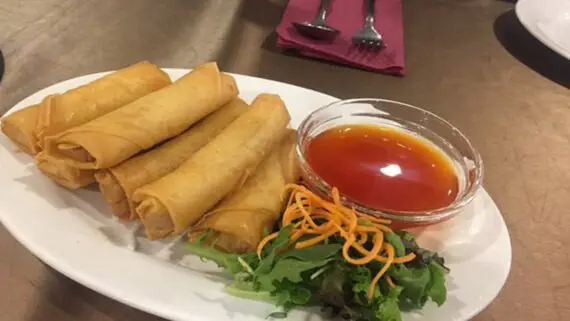Chinese Food Demystified a post that breaks down and demystifies some commonly misinterpreted terms, dishes, and Food in Chinese cooking.

This post is meant to help you understand the differences between a Hakka dish and a Sichuan dish, hoping that it will lead you to eat more Chinese cuisine.
Amazing 20 Chinese Food Demystified
1. Ton-Ting
A dish that contains meat, seafood, or vegetables in a clear broth.
2. Cash-Mein (Or Pancake)
An egg and flour crepe (similar to a pancake) served over rice noodles. Think of a Chinese take-out place: you order your crepe with pancakes, chicken, and vegetables seasoned with soy sauce and sesame oil.
3. Chop Suey
Mixed vegetables and meat tossed in a brown sauce.
4. Beef Noodle Soup (Or Beef-Noodle)
A clear, salty broth with ingredients: beef, beef bones, and other lean cuts of meat, noodles, celery, onions, and sometimes mini shrimps or scallions.
5. Wonton (Or Pork Dumplings)
Pork or shrimp dumplings served in soup or a clear broth.
6. Egg Foo Yong (Or Egg Fu Yung)
A dish made of scrambled eggs, usually paired with won ton and topped with soy sauce and sesame oil, but sometimes served with fried rice.
7. Chop Suey (2)
Another name for a Chow Mein dish, especially the noodles served over rice.
8. Lo Mein (Or Chow Mian)
A noodle dish that contains no protein and is not stir-fried or boiled in broth or water. Lo Mein dishes are usually tossed and served with sauce.
You may like: 21 Day Fix Chinese Food Takeout: Top 5 Nutrition Facts
9. Lo Mein (2)
A dish that contains no protein, no broth, and is not stir-fried or boiled in water. The noodles are usually mixed with vegetables, most commonly carrots and celery, but the vegetables can vary depending on the recipe.
It is served ‘wet’ with a soy sauce base and is usually mixed with onions, peas, diced carrots, and celery.
10. Fried Rice (Or Fried Rice)
A dish that contains no protein, but it is fried in a wok and mixed with eggs, making it a complete meal since eggs are a good source of protein.
11. Chow Mein (Or Chow Mian)
Beef, chicken, or shrimp stir-fried with onions, celery, carrots, and cabbage. The vegetables usually aren’t eaten but instead used for flavor and texture. The dish is served over rice noodles or white rice.
12. Lo Mein (3)
A dish containing protein, vegetables, and noodles. The protein can be beef, chicken, shrimp, or pork and the vegetables can be diced carrots and onions or cabbage. It is served with a soy sauce base.
13. Szechuan (Or Szechuan)
A Chinese dish that contains vegetables, usually peppers and onions with tofu, ground pork, and shrimp. It is traditionally served in red hot oil with vinegar and chili pepper.
14. Moo Shu Vegetables
A dish consisting of pork or chicken topped with fresh vegetables. Or, it is also prepared with eggs and mushrooms as a duck dish in which the meat is covered with a mushroom-egg mixture before grilling it.
15. Chow Mein (Or Chow Mian) (2)
Beef, chicken, or shrimp stir-fried with onions, celery, carrots, and cabbage. The vegetables usually aren’t eaten but instead used for flavor and texture. The dish is served over rice noodles or white rice.
16. Wonton (And Pork Dumplings)
Pork or shrimp dumplings served in soup or a clear broth.
17. Szechuan (2)
A Chinese dish that contains vegetables, usually peppers and onions with tofu, ground pork, and shrimp. It is traditionally served in red hot oil with vinegar and chili pepper.
18. Egg Foo Yong (3)
A dish made of scrambled eggs, usually paired with won ton and topped with soy sauce and sesame oil, but sometimes served with fried rice.
19. Beef Noodle Soup (2)
A clear, salty broth with ingredients: beef, beef bones, and other lean cuts of meat, noodles, celery, onions, and sometimes mini shrimps or scallions.
20. Lo Mein (Or Chow Mian) (3)
A noodle dish that contains no protein and is not stir-fried or boiled in broth or water. Lo Mein dishes are usually tossed and served with sauce.
Conclusion
Some of you might not understand the difference between a Sichuan dish and a Hakka dish. Still, when you gain proficiency in the art of guessing what Food is what, you’ll be able to go to a Chinese restaurant and order anything on the menu with confidence.
Don’t feel like you have to master it all at once because then you’re just being silly. Just start small, straighten out where noodles are concerned, and work your way up from there.
Good luck!